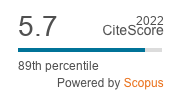Mineral and heavy metal accumulation in black soldier fly (Hermetia illucens) larvae (BSFL) is of growing interest. The bioaccumulation of elements in BSFL is usually assessed by a bioaccumulation factor (BAF), which is the ratio between the concentration of an element in the organism and in its feeding substrate. Recently, a new index, i.e. bioaccumulation index (BAI), which represents the relative increase in the concentration of a given element to its initial concentration has been proposed. The BAI is claimed to be a more valid alternative to the BAF, especially because it takes into account the initial element concentration of the larvae. This work assesses BAF and BAI in comparison with true element retention rate in BSFL. Using an experimental setup that included the element turnover of BSFL in two different feeding regimes (with and without a different substrate for neonatal larvae), we show that: (1) the initial element concentration in BSFL is only a tiny fraction (<0.1%) of the total element pool in the system, implying that the feeding substrate is the main source of elements to be accumulated by the growing larvae; (2) each element has a specific concentration pattern from the start to the end of feeding experiments. Furthermore, in cases where both neonatal diets and experimental feeding substrates are used during the larval growth period, BAI can be confounded by time/age with diet-related effects. From an agri-food perspective of rearing BSFL for element accumulation, the retention rate of elements from the feeding substrate to the larval body remains the most valid evaluation parameter. The results of input-output calculations and element-unspecific correlations suggest a higher agreement of true element retention rate with BAF than with BAI. Therefore, we propose to assess the element accumulation in BSFL by retention rate followed by BAF under laboratory conditions.
RESEARCH ARTICLE
The validity of the bioaccumulation index versus the bioaccumulation factor for assessment of element accumulation in black soldier fly larvae
G. Daş Related information , M.M. Seyedalmoosavi Related information
, M.M. Seyedalmoosavi Related information , K. Schleifer Related information
, K. Schleifer Related information , C.C. Metges Related information
, C.C. Metges Related information
1Research Institute for Farm Animal Biology (FBN), Institute of Nutritional Physiology, Wilhelm-Stahl-Allee 2, 18196 Dummerstorf, Germany.
*Corresponding author: gdas@fbn-dummerstorf.
*Corresponding author: gdas@fbn-dummerstorf.
 , M.M. Seyedalmoosavi Related information
, M.M. Seyedalmoosavi Related information1Research Institute for Farm Animal Biology (FBN), Institute of Nutritional Physiology, Wilhelm-Stahl-Allee 2, 18196 Dummerstorf, Germany.
 , K. Schleifer Related information
, K. Schleifer Related information1Research Institute for Farm Animal Biology (FBN), Institute of Nutritional Physiology, Wilhelm-Stahl-Allee 2, 18196 Dummerstorf, Germany.
, M. Mielenz Related information1Research Institute for Farm Animal Biology (FBN), Institute of Nutritional Physiology, Wilhelm-Stahl-Allee 2, 18196 Dummerstorf, Germany.
 , C.C. Metges Related information
, C.C. Metges Related information1Research Institute for Farm Animal Biology (FBN), Institute of Nutritional Physiology, Wilhelm-Stahl-Allee 2, 18196 Dummerstorf, Germany.

Journal of Insects as Food and Feed: 0
(0)- Pages: 1 - 16

Published Online: May 29, 2023
Abstract
Keywords: element retention, entomoremediation, heavy metal, feeding substrate, mineral
<
Issue Details
Journal of Insects as Food and Feed

Journal of Insects as Food and Feed

Online ISSN: 2352-4588
2022 Journal Impact Factor
5.7
source: Journal Impact Factor 2023™ from Clarivate™

Institutional Offers
For institutional orders, please contact [email protected].
Purchase Options
-
G. Daş, M.M. Seyedalmoosavi, K. Schleifer, M. Mielenz and C.C. Metges
-
-
M. Barrett, S.Y. Chia, B. Fischer and J.K. Tomberlin
-
D.G.A.B. Oonincx and M.D. Finke
-
G. Bosch and K.S. Swanson
-
K.B. Barragan-Fonseca, M. Dicke and J.J.A. van Loon
-
A. van Huis
-
M. Tschirner and A. Simon
-
S. Kelemu, S. Niassy, B. Torto, K. Fiaboe, H. Affognon, H. Tonnang, N.K. Maniania and S. Ekesi
-
M.B. Ruby, P. Rozin and C. Chan
Call for papers: Application of insect ingredients in sustainable aquaculture


